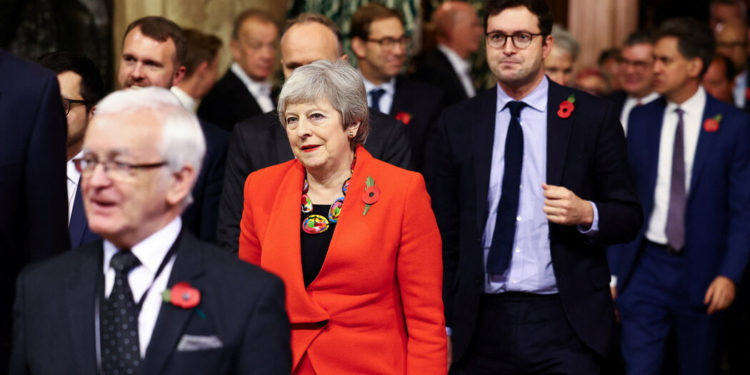By THE NEW YORK TIMES
Theresa May, the former British prime minister whose time in Downing Street was scarred by a protracted battle over Brexit, is to leave Parliament at the next general election after 27 years as a lawmaker.
With the Conservative Party trailing badly in opinion polls before an election that many analysts expect it to lose, Mrs. May is the most senior of the approximately 60 lawmakers from the party who have so far announced plans to leave Parliament.
Mrs. May, Britain’s second female prime minister, said in a statement to her local newspaper that she had “taken the difficult decision” to stand aside because she no longer felt she could represent voters in her district of Maidenhead in the way they deserved.
Causes that she has championed since leaving Downing Street, including tackling modern slavery, were taking an “increasing amount” of her time, she said.
Mrs. May became prime minister in 2016 after her predecessor, David Cameron, resigned when he found himself on the losing side of a referendum in which people in Britain voted, by 52 percent to 48 percent, to leave the European Union.
After that result, which sent shock waves around the world, it fell to Mrs. May — who had opposed the British withdrawal — to negotiate an exit deal with the bloc. In the divisive aftermath of the vote, her Brexit plan failed to win support in a deeply divided Parliament, and the deadlock that ensued provoked a protracted political crisis.
Although she survived one leadership challenge, she lost the support of Conservative lawmakers and was ultimately left with little choice but to resign in 2019. She was succeeded by one of her critics, Boris Johnson, who had been a vocal campaigner for Brexit.
Many admired the seriousness and determination that Mrs. May showed in her doomed effort to secure parliamentary support for her Brexit plan, which aimed to limit the economic damage of withdrawal as well as its impact on Northern Ireland.
But to her critics in the wider British public, her leadership style was often seen as lackluster and her speaking style stilted. When asked in a television interview what the naughtiest thing she had done as a child was, she replied that she had annoyed local farmers by running through fields of wheat.
In 2016, Mrs. May refused for months to outline her thinking on Britain’s withdrawal from the European Union, saying instead that her policy was that “Brexit means Brexit.”
Her political downfall dated from her decision to call an unexpected general election in 2017. Instead of increasing her party’s majority in Parliament as she expected, she lost it, denting her authority and compelling her to strike a deal with the small Democratic Unionist Party from Northern Ireland to stay in Downing Street.
At her party’s annual conference that year, Mrs. May’s big set-piece speech became a metaphor for her diminished political fortunes. First, she was disrupted by a prankster who theatrically handed her a notice saying that she was fired. Then she suffered a persistent cough. Finally, part of the “Building a Country That Works for Everyone” slogan on the stage set behind her fell off.
The next year, things went slightly better. Not long before the conference, Mrs. May’s dancing style had been criticized as wooden when she was filmed on a trip to Africa. She responded by entering the stage for her big speech to the sound of Abba’s “Dancing Queen.”
Mrs. May is one of three female former British prime ministers, all of whom have represented the Conservative Party. Margaret Thatcher was the first, serving from 1979 to 1990; and in 2022, Liz Truss became the shortest-lived prime minister in British history.
In her statement, Mrs. May told the Maidenhead Advertiser newspaper that she remained committed to supporting the current prime minister, Rishi Sunak, and that she believed the Conservatives could win the coming election.







Discussion about this post